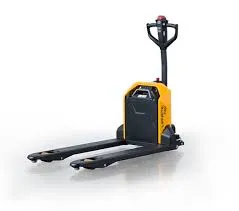


Understanding Fall Arrest Systems Importance and Implementation
In various industries, particularly construction, manufacturing, and maintenance, the risk of falls is a critical concern. Fall-related accidents can lead to severe injuries or even fatalities, making it imperative to implement effective safety measures. One of the most essential components in fall protection is the concept of fall arrest systems.
Fall arrest systems are designed to mitigate the consequences of a fall, ensuring that workers are safely suspended without making contact with the ground. These systems typically consist of personal protective equipment (PPE), anchorage points, and connecting devices. The primary goal is to limit the distance and force of a fall, thereby protecting the worker from serious harm.
Key Components of Fall Arrest Systems
1. Personal Protective Equipment (PPE) This includes harnesses, lanyards, and helmets. A full-body harness distributes the impact forces over a larger area of the body, minimizing the risk of injury. Lanyards connect the worker to the anchorage point, and they can come with energy absorbers that reduce the maximum arresting force on the body during an arrest.
2. Anchorage Points These are secure points where the fall arrest equipment is attached. They need to be robust and capable of withstanding the forces generated during a fall. Proper installation of anchorage points is crucial, as they are often fixed to structural elements of buildings or specialized equipment.
3. Connecting Devices This category includes things like carabiners and ropes that link the worker’s harness to the anchorage point. These devices must be made of durable materials and be inspected regularly to ensure their reliability.
Importance of Fall Arrest Training

Understanding how to use fall arrest systems effectively is integral to workplace safety. Employers must provide comprehensive training to workers on the correct use of fall protection equipment. Training should include the inspection of gear, proper donning and adjustment of harnesses, and the safe practices for connecting and disconnecting from fall arrest systems. Regular drills and refreshers are also crucial to reinforce safety protocols.
Regulations and Standards
Adhering to safety regulations and standards is essential in fall protection. Various organizations, including OSHA (Occupational Safety and Health Administration) in the United States, have established guidelines that specify when fall protection is required and the types of systems that can be used. Compliance with these regulations not only enhances worker safety but also helps employers avoid legal repercussions.
Real-World Applications
The implementation of fall arrest systems is not limited to construction sites. They are also vital in maintenance work on tall structures, such as wind turbines and communication towers. In these environments, fall arrest systems can mean the difference between life and death.
Conclusion
The importance of fall arrest systems in safeguarding workers cannot be overstated. By understanding the components, employing effective training, and complying with regulations, workplaces can create a culture of safety that significantly reduces the risk of fall-related accidents. As industries continue to evolve and heighten their operational standards, investing in robust fall arrest systems is not just a regulatory obligation; it is a fundamental responsibility to safeguard human life. Ensuring the safety of workers should always be the top priority, and fall arrest systems play a crucial role in achieving this goal.



